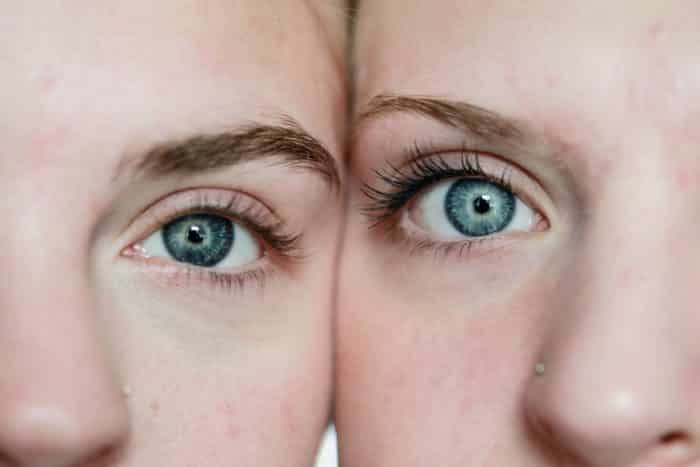What are the signs of codependency & what does a codependent relationship look like?
Table of Contents
Read straight through, or jump to the section you want to read:
- What are the signs of codependency & what does a codependent relationship look like?
- How do you work with codependency in therapy?
- What are the family origins of people who relate with codependent patterns?
- What happens to a person’s identity in a codependent relationship?
- How do you “detach with love?”
How do you work with codependency in therapy?
What are the family origins of people who relate with codependent patterns?
What happens to a person’s identity in a codependent relationship?
How do you “detach with love?”
What resources are there for working with codependency?
How do you start setting boundaries in a codependent relationship or even healthy relationships?
How do you start identifying your own feelings, thoughts, desires, hopes & dreams?
What would “healthy relationships” begin to look like? Read more and discover answers to all these and more questions you might have had about codependent relations in relation with psychotherapy.
What are the signs of codependency & what does a codependent relationship look like?
Codependent relationships tend to be one-sided with one person in a caretaker role, attempting to rescue the other person.
This can be in relationships where there is a presence of addiction or some form of dysfunction, including mental illness or various forms of abuse. In this dynamic, the “codependent” is receiving gratification from being needed and taking care of the other person; while the addict, mentally ill or abusive partner may be quite preoccupied with their own dysfunction and/or habit.
For the codependent partner, this dynamic often leads to severe emotional pain, lowered self-esteem, self-destruction, dissatisfaction and resentment in the relationship, and a chaotic lifestyle that feels unmanageable.

Codependency traits may look like:
- Having a preoccupation with fixing or controlling the behavior of others
- Having difficulty setting boundaries and saying NO, therefore people-pleasing and denying one’s own true intentions and will
- Attempting to gain love and approval from others by focusing and attending to them, only to find that they are not getting their needs met and these partners/friends may be emotionally unavailable
- Giving more and caretaking more in relationship while receiving little (or abuse) in return, leaving one feeling empty, unloved and resentful
How do you work with codependency in therapy?
Often times, it is through having a healthy and supportive relationship with a therapist that codependent patterns can be worked through.
A therapist is consistent, reliable, non-judgmental, supportive and someone that you can trust and be safe with over time. In that sense, you can explore relational patterns with the therapist because they aren’t going to react in the same way as your parents or any of your other key relationships.

There is also an opportunity to understand root causes in childhood that may have led to current patterns in adulthood– these patterns which may be cognitive, emotional, behavioral or relational can be worked through and challenged.
For instance, beliefs about setting boundaries, confronting others or about expressing wants and needs may all be explored in therapy.
Therapy will also challenge you to find internal resources again when focus has been primarily external — on controlling the addicted partner or trying to manage external chaos.
A therapist might encourage you to turn inwards to discover and express feelings as well as buried needs, wants and desires.
What are the family origins of people who relate with codependent patterns?
Most of the time, those with codependent tendencies experienced some form of emotional neglect in their childhood. They turned towards a caretaker role in childhood which also followed into adulthood.
This may allow the person to have some sense of relationship later in life by having connection or someone’s physical presence, but without getting their needs met and without any of the benefit of being in a reciprocal relationship.

A codependent person usually had one of the following happen:
- They were parentified early because their parents weren’t able to attune to their needs and then had to grow up fast to meet their own needs and be independent
- They were made to legitimately take care of their parents who were addicted to substances, mentally ill and/or emotionally unavailable
- There was excessive criticism or abuse in the home and the child needed to shut down needs and not “want” anything for fear of being unsafe or harshly judged
- There was a blatant denial of needs and emotions in the home either by parents just ignoring needs and emotional cues or coming at the child with excessive rage or criticism of having a need or emotion
- Needs were taken care of in excess by parents; so much so that children don’t learn with proper guidance on how to care for themselves. For instance, it may take until 5 years old to learn to tie shoes, past the time of what’s developmentally appropriate.
Or they consistently had their own rooms cleaned for them. When these children become adults, they may have a difficult time meeting their own needs and adhering to any structure of self-care.
This may be in the areas of personal and environmental hygiene, medical and dental appointments, hunger/feeding, recreation, physical touch/relationships/sex, and/or clothing and personal appearance.
What happens to a person’s identity in a codependent relationship?
A person might begin to lose their identity in a codependent relationship. They might stop doing the hobbies or activities they formerly loved to place primary focus on their partner, especially if their partner is encountering constant struggle, crisis and chaos.
One might even adopt the hobbies, likes, beliefs and dreams of their partner in exchange for their own. Following a break-up from a codependent relationship, one might be left feeling empty, out of control and as though they don’t know who they are anymore.
Sometimes they look over the relationship and locate that they had felt “tamped down” or that their life had “become dimmed.” So much time and energy is placed on trying to control the “out of control” partner that one lose’s themselves in this futile dance.

Working through codependency, one would begin to place the focus back on themselves and rebuilding a life and identity that they enjoy– focused on their own feelings, likes, needs and dreams.
How do you “detach with love?”
The phase “detach with love” comes from the Al-Anon program. It means that the family member or friend stops enabling the behavior of the addict. This means that they will no longer try to fix the problem, do things to help or save the addict.
This may mean leaving a person at the bar and not picking them up, not giving them money for alcohol, not tracking how many drinks they are consuming and not advising them on making life decisions that impact their health. In this way, the family member/friend lets go and allow the addict to experience the negative effects of their use of the substance.
This may appear cruel and the alcoholic/addict will probably have large reactions, thoughts and feelings to this change in behavior and boundary-setting– this often spurs feelings of guilt and fear in the family member/friend, however, it means they are moving towards health for themselves.

Ultimately, they aren’t necessarily cutting the alcoholic/addict out of their lives (thought they might choose to.)
Instead they are taking care of themselves and lovingly saying they will be there for the alcoholic/addict but limit their involvement for their own health, well-being and safety. It is also counter-intuitively more helpful for the alcoholic/addict to detach in this way so that they can potentially bottom out and learn about their own behavior.
“Detaching with love” may also be helpful in the context of dating and relationships in general; it releases control and expectation of another person so that the individual/client can personally thrive and building their own health, identity, skills, opinions, and stability.
What resources are there for working with codependency?
Those who identify themselves as having codependent patterning and traits may find themselves in programs such as Alanon or CODA.
Some may find that 12-steps program can offer support, understanding and tools to live on a daily basis. 12-step programs alongside psychotherapy can make for a great combination for healing and growth.
Others may choose to begin reading before setting foot in 12-step rooms.
Pia Mellody’s writings have been the most clear on the topic and she offer various books from Facing Codependency to Facing Love Addiction.
Moreover, the classic Codependent No More is the most popular book on the topic to date and is usually the place where many begin.
How do you start setting boundaries in a codependent relationship or even healthy relationships?
Many times when codependency is already the dynamic in a relationship, it may feel very hard to change and reorganize its foundation.
Classic examples of codependent relationships may be when there is a caretaker to an alcoholic, an underachiever/underearner or someone with severe mental illness. In all of these cases, the caretaker (or codependent) may overcompensate for the other person, enabling them to continue their addiction or lying in stunted developmental growth.
Hence, it may come with great guilt and apprehension to STOP taking care of the other (while remaining loving) and continue to re-place the focus on one’s self, one’s own health and well-being and even putting these ahead of the other.

The above requires boundary-setting. Pia Mellody defines boundaries in Facing Codependence as:
“Boundary systems are invisible and symbolic “force fields” that have three purposes:
- to keep people from coming into our space and abusing us,
- to keep us from going into the space of others and abusing them, and
- to give each of us a way to embody our sense of ‘who we are.’
The very beginning of setting boundaries is saying “No” to the other person, by being able to define what one is comfortable with or not– if an action causes great discomfort, anger, remorse or resentment, it is completely up to the person to be able to disengage from this behavior or action. This type of boundary-setting often takes practice and is generally anxiety-provoking and imperfect.
Often when someone begins setting boundaries there is a backlash from these unhealthy relationships or family systems.
More often than not, this is because the change is upsetting to the system itself– the system or relationship may have to reorganize due to the shift (and people generally don’t like that!) It helps to have the support of a therapist to practice boundary-setting and discuss the trials and tribulations of this new behavior.
How do you start identifying your own feelings, thoughts, desires, hopes & dreams?
If you’ve been in a relationship with an alcoholic, chances are there has been a lot of focus on managing their behavior and alcohol intake. In this relationship, the codependent’s focus is external. It is often said that the alcoholic is addicted to alcohol while the codependent is addicted to the alcoholic (and hence, the relationship.)
Considering how much focus has been placed on the relationship, someone involved in a codependent relationship may find the loss of one to be devastating. Identity and concern may be so tied up in the relationship that the loss may bring about feelings of extreme pain, sometimes as though it feels like ego death or dying.

In psychotherapy, one of the main focuses in working with codependency is to bring attention back to the body and one’s own experience on a moment-to-moment basis.
This mindful reorientation, albeit a slow process, can allow someone to uncover buried feelings, old hopes and dreams that went missing and also a simple understanding of one’s own opinions and perceptions (that may have become warped and distorted in the relationship.) At first the body may seem numb and that there are no feelings or that “nothing is there.”
However, with continued re-alignment and re-attunement to the body, feeling and other information may start to unfreeze to become readily available again. Patients often find that with more feeling and personal information readily available to them, they make different kinds of choices for themselves and become actors in their own lives.
What would “healthy relationships” begin to look like?
Healthy relationships would begin to look like ones where there is mutual support and reciprocity. The individuals in relationship can be responsible for themselves and their own lives. They can respect each others strengths and tolerate (while working on) their weaknesses.
They have open and honest communication. They boost each other up while also challenging them to look deeply at themselves and grow. They respect each others’ boundaries and their individual rights to meet their own needs. They listen to each other when there is hurt, a need for an apology and/or a need might be requested.

Ultimately, there is enough trust, consistency and support for each person to be themselves and show up authentically. Each person has solid self-esteem or is working to improve and understand their sense of self to show up fully in the relationship.
Did you like this piece of content?
Say hello to our team!
0 Comments